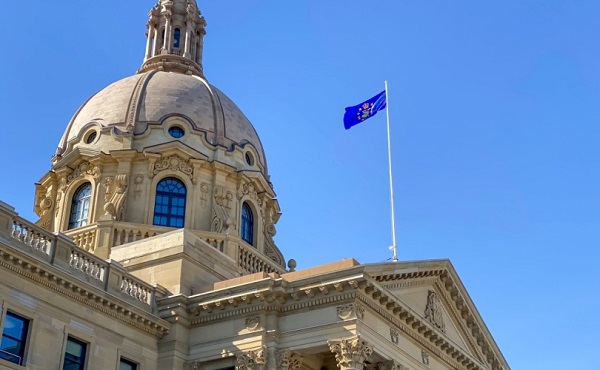Bruce Dowbiggin
Death Becomes You: How Canada Became Euthanasia Central
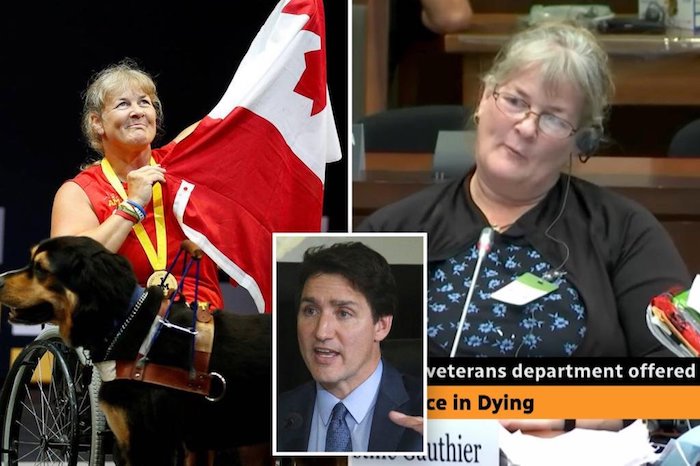
Liberalism used to mean live-and-let-live. If your neighbour painted his house day-glo green, liberals shrugged and said, “so be it”. Now? You must not only heap fulsome public praise on his paint preference but you must paint your own house the same glaring colour, too. While apologizing for your abject failure in not recognizing his lived paint experience.
The runaway freight train that is liberalism the past decade has come to affect virtually every part of life. Now the moveable goal posts have come to impact death, too. As usual, the best intentions of cozy liberals have become the ugly bureaucratic beast of effective altruism.
The issue de jour of assisted suicide— tactfully known in Canada as medical assistance in dying (MAID)— leapt into the Canadian public consciousness with the ALS death of Toronto Maple Leaf legend Borje Salming. As we wrote here , the spectacle of the legendary Swede taking a last public lap with his former teammates and fans in Toronto last month was heart-rending.

Salming, who was diagnosed in April, died just after returning to Sweden. Former teammate Mark Kirton, who also suffers from ALS, a progressive nervous system disease which has no known cure, spoke for all terminal patients in weighing their options. “He died a good death,” Kirton said. “What I mean by that is, his family was around him. He didn’t allow the ALS monster to tear him apart.
“Let me elaborate on that. He knew how much a burden he would be to his family if it kept going, going, going. He knew what was going on in that respect. He was a smart player, even a smarter man.”
Naturally the swift end for Salming so soon after returning from Toronto raised questions. Did Salming use assisted suicide? It is not yet legal in Sweden, and no one has confirmed that he did. But to those who think MAID should be available to terminal patients Salming’s case perfectly fits the template of compassion.
Had Salming been Canadian, he could have availed himself of MAID in Canada. Available to physically challenged or terminal patients since 2016, it has now will be expanded in March 2023 to include those living with mental-health conditions. The law says “a physician or nurse practitioner can directly administer a substance that causes the death of the person who has requested it, or A physician or nurse practitioner can give or prescribe to a patient a substance that they can self-administer to cause their own death.” (In the United States, physician-assisted suicide is legal in nine states and D.C.)
Many Canadians want the option to decide when enough is enough— and are choosing death. In 2021 over 10,000 ended their lives this way, just over 3 percent of all deaths in Canada. But as is typical of this Liberal government and its virtue-seeking cadres, the original compassionate sentiment and its rollout have produced something else used by malign actors.
Assisted death has now seemingly gone from last resort to earth-friendly lessening of the population promoted by society’s top names. And as an alternative to psychiatric treatment. Medical providers of MAID are being told that bringing up the topic to vulnerable patients is now a professional obligation.
According to reports, patients suffering from depression and other psychiatric conditions are being offered MAID as an alternative to treatment. One man said he wanted MAID to escape his terrible financial straits. The most dramatic suggestion has come from desperate Canadian veterans who claim they are being offered MAID in lieu of further treatment.
The federal government says it has no evidence of this being offered, but veterans insist it was verbally offered. Retired corporal and Canadian Paralympian Christine Gauthier told the House of Commons’ veterans affairs committee in November that she was offered an assisted death during her five-year fight for a wheelchair ramp in her home.
Other veterans had similar stories of their psychiatric treatment being no treatment at all. “Mental-health injuries can be terminal only if they’re untreated, unsupported and under-resourced,” said Wounded Warriors executive director Scott Maxwell, whose organization runs mental-health support programs for veterans and first responders.
According to Maria Cheng of The Associated Press, “the Canadian system shows exactly the corrosive features that critics of assisted suicide anticipated, from health care workers allegedly suggesting euthanasia to their patients to sick people seeking a quietus for reasons linked to financial stress”. But defenders of those too ill or depressed to defend themselves are up against stiff competition in the battle for Canadian hearts and minds. 
The fashion retailer Simons produced a lavish PSA in October about 37-year-old Jennyfer Hatch, who was approved for MAID amid suffering associated with Ehlers Danlos syndrome. Simons execs said their piece was to “build the communities that we want to live in tomorrow, and leave to our children.” NYT columnist Ross Douthat observed: “For those communities and children, the video’s message is clear: They should believe in the holiness of euthanasia.”
As if gauzy tributes to MAID were not enough, mainstream Canadian media found a silver lining. “Medically assisted deaths prove a growing boon to organ donation in Ontario,” chirped the Ottawa Citizen. “Ontarians who opt for medically assisted deaths (MAiD) are increasingly saving or improving other people’s lives by also including organ and tissue donation as part of their final wishes.” Well gosh, ain’t that swell!
Unspoken in this move to euthanasia is the acknowledged desire on the part of many environmentalists and radicals to reduce the world population. Planned Parenthood has long embraced euthanasia as a means of lowering the population— especially those with whom they disapprove politically or culturally. Noted population catastrophist Paul Ehrlich has predicted everything from nuclear disaster to plague unless we get on with the business of helping people die— especially people not down with climate catechism.
Not surprisingly Canada is now being mocked as the assisted-suicide hub of the world. Annette Prestia: “‘Kill yourself’ is either an insult that will get you kicked off Twitter or health advice from the Canadian government” Tweeted Adam Zivo: “The toilet in my boyfriend’s apartment stopped working tonight. I let him know that, if the problem persists, we can just fly to Canada and apply for MAID”.
So if nothing else, Canada has that going for us. We The Dead North coming to a screen near you.
[Disclosure: At NPB we have seen our brother-in-law die of ALS upper bulbar palsy and currently have a close friend battling the disease.]
Sign up today for Not The Public Broadcaster newsletters. Hot takes/ cool slants on sports and current affairs. Have the latest columns delivered to your mail box. Tell your friends to join, too. Always provocative, always independent. https://share.hsforms.com/16edbhhC3TTKg6jAaRyP7rActsj5
Bruce Dowbiggin @dowbboy is the editor of Not The Public Broadcaster A two-time winner of the Gemini Award as Canada’s top television sports broadcaster, he’s a regular contributor to Sirius XM Canada Talks Ch. 167. Inexact Science: The Six Most Compelling Draft Years In NHL History, his new book with his son Evan, was voted the seventh-best professional hockey book of all time by bookauthority.org . His 2004 book Money Players was voted sixth best on the same list, and is available via http://brucedowbigginbooks.ca/book-personalaccount.aspx
Bruce Dowbiggin
Eau Canada! Join Us In An Inclusive New National Anthem
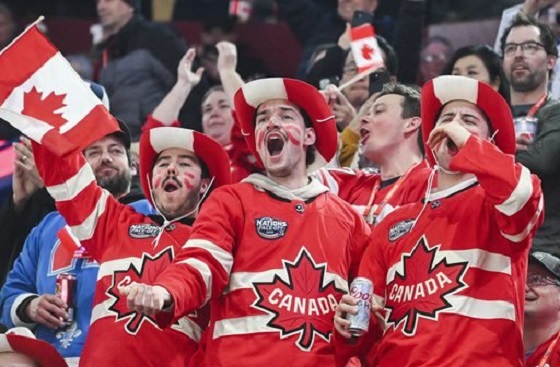
This past week has seen (some) Canadians celebrating their heritage— now that Mike Myers has officially reinterpreted Canadian culture as a hockey sweater and Mr. Dressup. This quick-change was so popular that Canadian voters even forgot an entire decade of Justin Trudeau.
In the United States, the people who elected Donald Trump– and not Andrew Coyne– to run their nation celebrated Independence Day with stirring renditions off The Star Spangled Banner, although few could surpass the brilliant performance of the song by the late Whitney Houston at the 1991 Super Bowl.
The CDN equivalent is some flavour of the month changing the words to O Canada at the Grey Cup game. Canada’s national anthem has always been open to interpretation by people who may or may not have Canada in their hearts. At the 2023 NBA All Star Game Canadian chanteuse Jully Black became the latest singer to attempt a manicure to the English lyrics of O Canada, penned for the 1880 Saint-Jean-Baptiste Day ceremony ( Calixa Lavallée composed the music, after which words were written by the poet and judge Sir Adolphe-Basile Routhier. The English lyrics have “evolved” over the years, just like the dress code for the CDN PM..)

Black amended the first line from “our home and native land” to our home ON native land”. Because something-something. But this creative license is nothing new. Unlike Chris Stapleton, Marvin Gaye or Whitney Houston with the Star Spangled Banner, interpreters of O Canada have seen fit to amend the lyrics to their sensibilities. Roger Doucet, famed anthem singer of the Montreal Canadiens in the 1970-80s, tried to add the words “we stand on guard for truth and liberty” in place of the first “we stand on guard for thee”.
In 1990, having nothing better to do, Toronto City Council voted 12 to 7 in favour of recommending that the phrase “our home and native land” be changed to “our home and cherished land” and that “in all thy sons command” be partly reverted to “in all of us command”. (The latter was officially adapted.)
While those attempts had mixed outcomes it appears it’s just a matter of time till Ms. Black’s class-conscious culling of the words is accepted. Being generous we here at IDLM thought we’d short-circuit piecemeal attempts to create a throughly Woke version of the anthem that would last till the latest fad come along. Herewith our 2023 definitive O Canada that even— maybe only— Justin Trudeau could love:
“O Canada” (Ignores the French fact in our culture) Change to “Eau Canada”
“Our home on native land” (ignores indigenous land claims) Change to “Get off our land, settlers”
“True patriot love in all of us commands” (Only true patriot love? There were officially 78 kinds of relationships in Trudeaupia. And commanding love?) Change to “Love the one you’re with”.
“With glowing hearts we see thee rise” (rise suggests triumph of white triumphalist dogma) Change to “Non judgementally we oppose the crushing impacts of Euro-based autocracy”
“The true north strong and free” (How can anyone be strong or free when we support America’s killing fields?) Change to “Heteronormative thinking must be stamped out at our borders. If we even have borders anymore.”
“From far and wide” (Body shaming) Change to “Obesity is a disease that is not helped by putting it in the national anthem.”
“O Canada” (biased against A, B, AB blood types) change to “Science Must Be Believed”
“We stand on guard for thee” (Spreads hate against the non ableist community) Change to “Please remain seated.”
“God keep our land” (God? God? What is this, the Reformation) “Change to “It’s your thing”
”Glorious and free” (Glorious harkens to the bourgeois subjugation of Indigenous thought processes by white Christian priests) Change to “A genocidal state if there ever was one”.
“O Canada we stand on guard for thee/
O Canada we stand on guard for thee” The denial of trans rights is used twice here to emphasize the intolerable burdens faced by people of the LGBTQ2R community as they seek respect and compensation for the evils of the founding oppressors.) Change to “Eau Canada, after 6.5 hours of intensive lectures on the gender, race and dissociative application of class war on your citizens you may someday come to understand that this song is a manifestation of your bigotry and exploitation of minorities— and why rhyming lines like “thee and free” is the work of the devil or J.K. Rowling, whomever comes to mind first.”

There. That wasn’t so tough, was it? Flows trippingly off the tongue like Mark Carney refusing a special inquiry into China buying the electoral process. Or perhaps we should simply accept a literal translation of the original French lyrics:
“O Canada!
Land of our ancestors
Glorious deeds circle your brow
For your arm knows how to wield the sword
Your arm knows how to carry the cross;
Your history is an epic
Of brilliant deeds
And your valour steeped in faith
Will protect our homes and our rights.”
Yikes. That’s downright fascistic. But it’s Quebec, and we have to allow them their peccadilloes. So circle your brow with glorious deeds, grab a cross and a sword and valour steeped in faith. And remember we must be adaptable in the new era.
Unless it’s Alberta using the adapting to fuel its CO2-belching machines. In which case it’s man the battlements and follow Mike Myers into the fight.
Bruce Dowbiggin @dowbboy is the editor of Not The Public Broadcaster A two-time winner of the Gemini Award as Canada’s top television sports broadcaster, his new book Deal With It: The Trades That Stunned The NHL And Changed hockey is now available on Amazon. Inexact Science: The Six Most Compelling Draft Years In NHL History, his previous book with his son Evan, was voted the seventh-best professional hockey book of all time by bookauthority.org . His 2004 book Money Players was voted sixth best on the same list, and is available via brucedowbigginbooks.ca.
Bruce Dowbiggin
The Game That Let Canadians Forgive The Liberals — Again
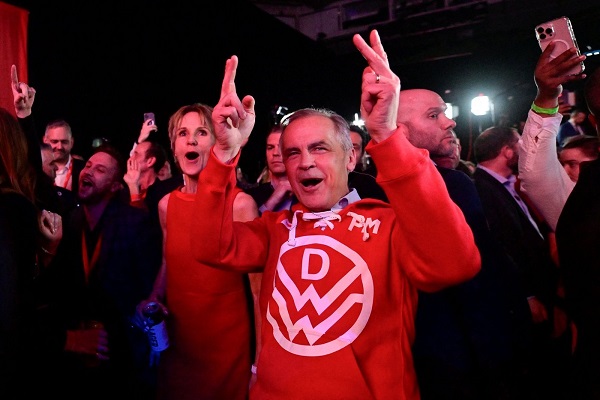
With the Americans winning the first game 3-1, a sense of panic crept over Canada as it headed to Game 2 in Boston. Losing a political battle with Trump was bad enough, but losing hockey bragging rights heading into a federal election was catastrophic for the Family Compact.
“It’s also more political than the (1972) Summit Series was, because Canada’s existence wasn’t on the line then, and it may be now. You’re damn right Canadians should boo the (U.S.) anthem.” Toronto Star columnist Bruce Arthur before Gm. 1 of USA/ Canada in The 4 Nations Cup.
The year 2025 is barely half over on Canada Day. There is much to go before we start assembling Best Of Lists for the year. But as Palestinian flags duel with the Maple Leaf for prominence on the 158th anniversary of Canada’s becoming a sovereign country it’s a fair guess that we will settle on Febuary 21 as the pivotal date of the year— and Canada’s destiny as well.
That was the date of Game 2 in the U.S./Canada rivalry at the Four Nations Tournament. Ostensibly created by the NHL to replace the moribund All Star format, the showdown of hockey nations in Boston became much more. Jolted by non-sports factors it became a pivotal moment in modern Canadian history.
Set against U.S. president Donald Trump’s bellicose talk of Canada as a U.S. state and the Mike Myers/ Mark Carney Elbows Up ad campaign, the gold-medal game evoked, for those of a certain age, memories of the famous 1972 Summit Series between Canada and the USSR. And somehow produced an unprecedented political reversal in Canadian elections.
As we wrote on Feb. 16 after Gm. 1 in Montreal, the Four Nations had been meant to be something far less incendiary. “Expecting a guys’ weekend like the concurrent NBA All Star game, the fraternal folks instead got a Pier Six brawl. It was the most stunning beginning to a game most could remember in 50 years. (Not least of all the rabid Canadian fanbase urging patriotism in the home of Quebec separation) Considering this Four Nations event was the NHL’s idea to replace the tame midseason All Star Game where players apologize for bumping into each other during a casual skate, the tumult as referees tried to start the game was shocking.
“Despite public calls for mutual respect, the sustained booing of the American national anthem and the Team Canada invocation by MMA legend Georges St. Pierre was answered by the Tkachuck brothers, Matthew and Brady, with a series of fights in the first nine seconds of the game. Three fights to be exact ,when former Canuck J.T. Miller squared up with Brandon Hagel. (All three U.S. players have either played on or now play for Canadian NHL teams.)
“Premeditated and nasty. To say nothing of the vicious mugging of Canada’s legend Sidney Crosby behind the U.S. net moments later by Charlie McEvoy.”
With the Americans winning the game 3-1 on Feb. 15, a sense of panic crept over Canada as it headed to Game 2 in Boston. Losing a political battle with Trump was bad enough, but losing hockey bragging rights heading into a federal election was catastrophic for the Family Compact. As we wrote in the aftermath, a slaughter was avoided.

“In the rematch for a title created just weeks before by the NHL the boys stuck to hockey. Anthem booing was restrained. Outside of an ill-advised appearance by Wayne Gretzky— now loathed for his Trump support— the emphasis was on skill. Playing largely without injured Matthew and Brady Tkachuk and McAvoy, the U.S. forced the game to OT where beleaguered goalie Craig Binnington held Canada in the game until Connor McDavid scored the game winner. “
The stunning turnaround in the series produced a similar turnaround in the Canadian federal election. Galvanized by Trump’s 51st State disrespect and exhilarated by the hockey team’s comeback, voters switched their votes in huge numbers to Carney, ignoring the abysmal record of the Liberals and their pathetic polling. From Pierre Poilievre having a 20-point lead in polls, hockey-besotted Canada flipped to award Carney a near-majority in the April 28 election.
The result stunned the Canadian political class and international critics who questioned how a single sporting event could have miraculously rescued the Liberals from themselves in such a short time.

While Canada soared because of the four Nations, a Canadian icon crashed to earth. “Perhaps the most public outcome was the now-demonization of Gretzky in Canada. Just as they had with Bobby Orr, another Canadian superstar living in America, Canadians wiped their hands of No. 99 over politics. Despite appeals from Orr, Don Cherry and others, the chance to make Gretzky a Trump proxy was too tempting.
We have been in several arguments on the subject among friends: Does Gretzky owe Canada something after carrying its hockey burden for so long? Could he have worn a Team Canada jersey? Shouldn’t he have made a statement that he backs Canada in its showdown with Trump? For now 99 is 0 in his homeland.”
Even now, months later, the events of late February have an air of disbelief around them, a shift so dramatic and so impactful on the nation that many still shake their heads. Sure, hockey wasn’t the device that blew up Canada’s politics. But it was the fuse that created a crater in the country.
Bruce Dowbiggin @dowbboy is the editor of Not The Public Broadcaster A two-time winner of the Gemini Award as Canada’s top television sports broadcaster, his new book Deal With It: The Trades That Stunned The NHL And Changed hockey is now available on Amazon. Inexact Science: The Six Most Compelling Draft Years In NHL History, his previous book with his son Evan, was voted the seventh-best professional hockey book of all time by bookauthority.org . His 2004 book Money Players was voted sixth best on the same list, and is available via brucedowbigginbooks.ca.
-
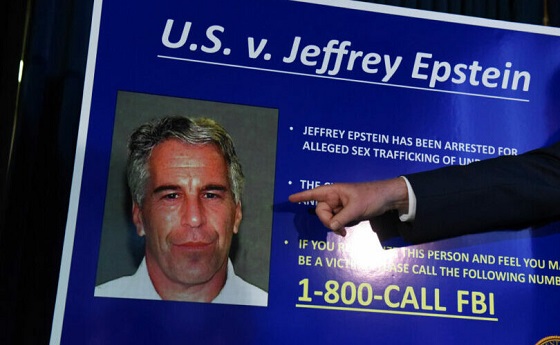
 Crime2 days ago
Crime2 days ago“This is a total fucking disaster”
-

 Fraser Institute1 day ago
Fraser Institute1 day agoBefore Trudeau average annual immigration was 617,800. Under Trudeau number skyrocketted to 1.4 million annually
-
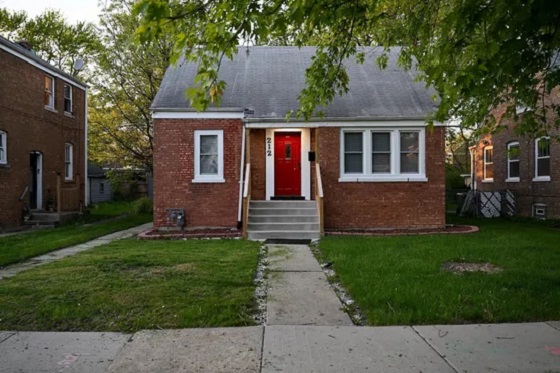
 International2 days ago
International2 days agoChicago suburb purchases childhood home of Pope Leo XIV
-

 Daily Caller2 days ago
Daily Caller2 days ago‘I Know How These People Operate’: Fmr CIA Officer Calls BS On FBI’s New Epstein Intel
-

 MAiD2 days ago
MAiD2 days agoCanada’s euthanasia regime is already killing the disabled. It’s about to get worse
-

 Daily Caller2 days ago
Daily Caller2 days agoBlackouts Coming If America Continues With Biden-Era Green Frenzy, Trump Admin Warns
-

 Red Deer2 days ago
Red Deer2 days agoJoin SPARC in spreading kindness by July 14th
-

 Business1 day ago
Business1 day agoPrime minister can make good on campaign promise by reforming Canada Health Act



